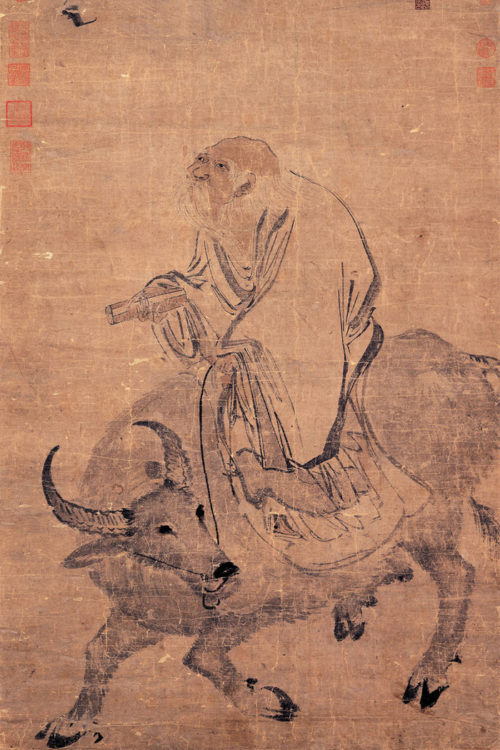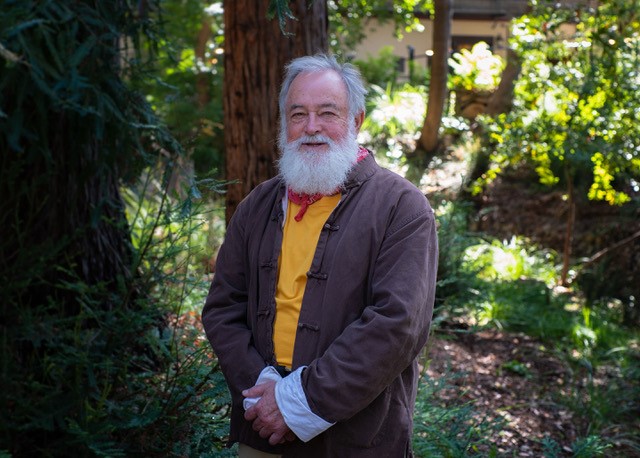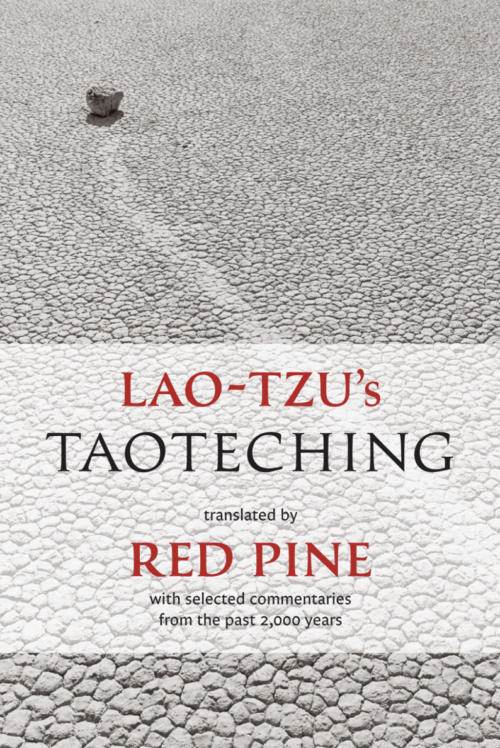| 故 鑿 埏 卅 有 戶 埴 輻 之 牖 以 共 以 以 為 一 為 為 器 轂 利 室 。 。 。 。 當 當 無 當 其 其 之 其 無 無 以 無 。 。 為 。 有 有 用 有 器 車 。 室 之 之 之 用 用 用 。 。 。 |
Thirty spokes converge on a hub but it’s the emptiness that makes a wheel work pots are fashioned from clay but it’s the hollow that makes a pot work windows and doors are carved for a house but it’s the spaces that make a house work existence makes a thing useful but nonexistence makes it work |
Commentaries
HSUAN-TSUNG says, “Thirty spokes converging on a hub demonstrates that less is the ancestor of more.”
HO-SHANG KUNG says, “Ancient carts had thirty spokes in imitation of the lunar number.”
LI JUNG says, “It’s because the hub is empty that spokes converge on it. Likewise, it’s because the minds of sages are empty that the people turn to them for help.”
CH’ENG HSUAN-YING says, “A cart, a pot, and a house can hold things because they are empty. How much more those who empty their mind.”
WU CH’ENG says, “All of these things are useful. But without an empty place for an axle, a cart can’t move. Without a hollow place in the middle, a pot can’t hold things. Without spaces for doors and windows, a room can’t admit people or light. But these three examples are only metaphors. What keeps our body alive is the existence of breath within us. And it is our empty, nonexistent mind that produces breath.”
SUNG CH’ANG-HSING says, “In this verse the Great Sage teaches us to understand the source by using what we find at hand. Doors refer to a persons mouth and nose. Windows refer to their ears and eyes.”
CHANG TAO-LING says, “When ordinary people see these things, they only think about how they might employ them for their own advantage. When sages see them, they see in them the Tao and are careful in their use.”
TE-CH’ING says, “Heaven and Earth have form, and everyone knows that Heaven and Earth are useful. But they don’t know that their usefulness depends on the emptiness of the Great Way. Likewise, we all have form and think ourselves useful but remain unaware that our usefulness depends on our empty, shapeless mind. Thus, existence may have its uses, but real usefulness depends on nonexistence. Nonexistence, though, doesn’t work by itself. It needs the help of existence.”
HUANG YUAN-CHI says, “What is beyond form is the Tao. What has form are tools. Without tools we have no means to apprehend the Tao. And without the Tao there is no place for tools.”
HSUEH HUI says, “At the end of this verse, Lao-tzu mentions both existence and nonexistence, but his intent is to use existence to show that nonexistence is more valuable. Everyone know existence is useful, but no one pays attention to usefulness of nonexistence.”
Lao-tzu’s “existence” and “nonexistence” are tantamount to yang and yin. There is no Kuotien text for this verse, and there are no significant textual variations, other than the omission in line seven of yi-wei-shih, “carved for a house” in both Mawangtui texts. Such an omission was, no doubt, a copyist error and suggests that neither text was actually used before it was placed in the tomb in which it was found, or it would have been corrected. Until recently, the people who lived in the middle reaches of the Yellow River watershed, where the Taoteching was composed, carved their houses out of the loess hillsides. As long as the ceilings of the rooms were carved in an arch, the compactness of the soil made support beams unnecessary. Thus, the only building materials needed were for doors and windows.






